Specialized services
Resin restorations, porcelain veneers, fixed prostheses and more in Cartagena
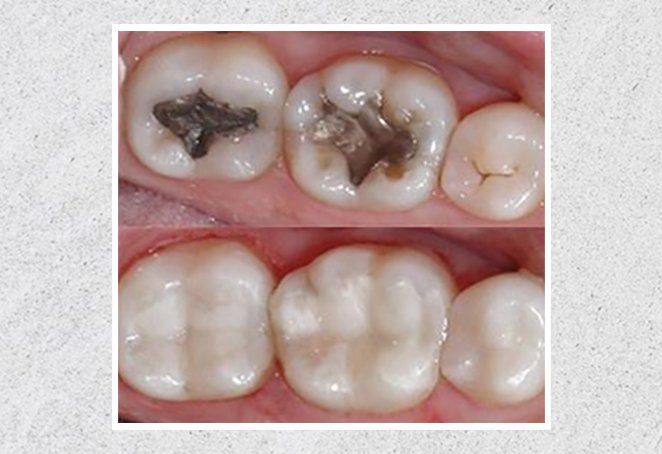
Slide title
Escriba su subtítulo aquíButton
Resin Restorations
- See more
We do not put dental amalgam, we do not use mercury. In this way we keep the dental structure to the maximum thanks to the adhesive dentistry, to obtain lasting restorations, aesthetic and without leaks. Amalgam is an excellent material for its hardness and longevity, but its corrosion over the years leads to dental fractures and irreversible pigmentation of the crown of the tooth, is unsightly.
It should be noted that resin restorations are cheaper than porcelain restorations and also have the advantage of being made in a single appointment.
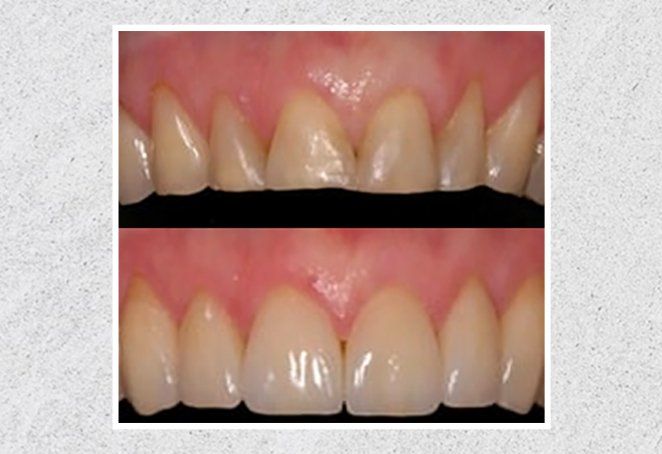
Slide title
Escriba su subtítulo aquíButton
Veneers or Porcelain Veneers
- See more
We manufacture them in our dental laboratory with thicknesses of 0.3 mm, which makes them called contact lenses, are adhered to the dental structure simulating a new layer of enamel with the color and brightness you have always wanted.
Changing the shape, size and color of your teeth in the most conservative way is already possible because regularly you do not have to touch your teeth with strawberry and without anesthesia.
Porcelain restorations do not change color.

Slide title
Escriba su subtítulo aquíButton
Porcelain Overlays
- See more
Overlay or porcelain inlays
They are porcelain or ceramic restorations that reconstruct more than 50% of the tooth, require a single appointment.
They are adhered with a cement based resin which gives us a perfect seal, without leaks.
Removal of amalgams and placement of porcelain restorations E.max
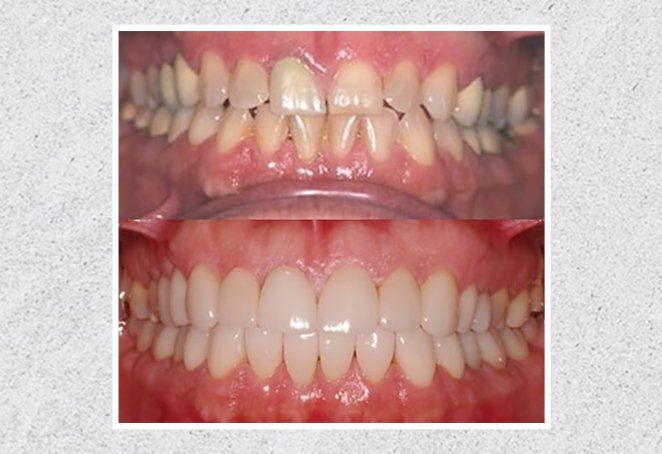
Slide title
Escriba su subtítulo aquíButton
Porcelain Crowns
- See more
A crown may have a natural tooth or an implant. Indications of placing a crown:
- Natural tooth widely destroyed by caries or fracture.
- Protect a weakened tooth.
- Restore a fractured tooth.
- Aesthetically restoring a pigmented or irregularly shaped tooth.
- Restore a tooth that has received root canal treatment.
Patient to which several metal-porcelain crowns were removed and we placed crowns and veneers or porcelain veneers E.max.
Note the black area on the collars of some teeth due to the presence of metal, that type of crowns are a little more economical, but do not have the aesthetics of full porcelain or metal-free crowns.
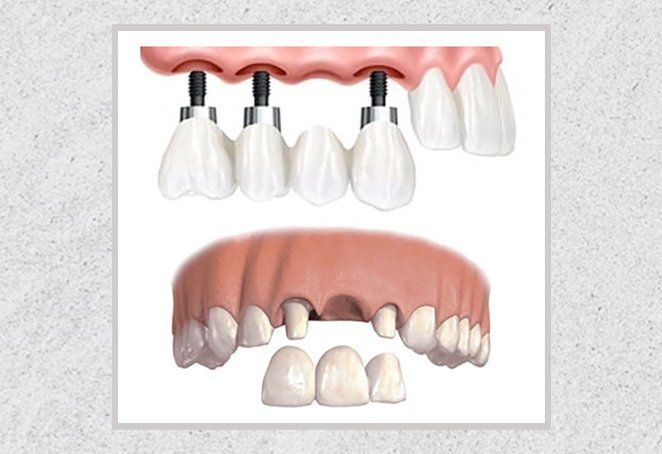
Slide title
Escriba su subtítulo aquíButton
Slide title
Escriba su subtítulo aquíButton
Fixed Prosthesis
- See more
The selection with metal or zirconium, will aesthetically affect because with metal regularly will see the necks of the black crown, while with zirconium will have the color of natural teeth.
We also find some patients allergic to metals in which it is obligatory to manufacture them without metal, only zirconium plus porcelain.
The PPF is cemented to the abutment teeth and can not be removed by the patient, its longevity can reach 10 to 25 years and in some patients longer can last.
To the neighboring teeth to the free space, they are made a slight wear or preparation to create the space of the restorative material, for example: zirconium and porcelain.
On implants such as abutments, a fixed partial denture can also be made.
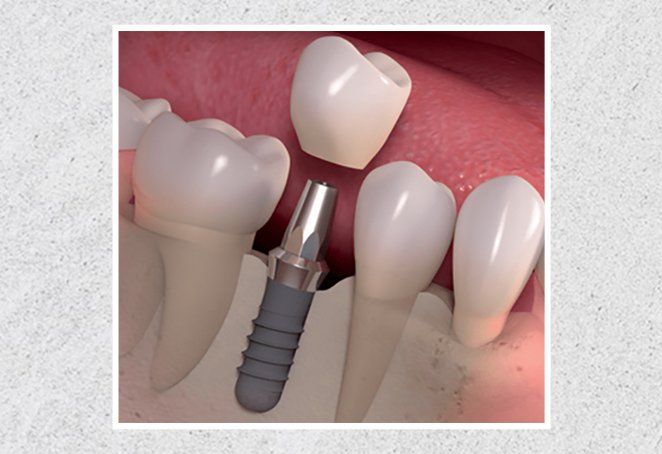
Slide title
Escriba su subtítulo aquíButton
Bone Implants
- See more
We have the highest standards of sterilization for your safety, it is not necessary to order antibiotics regularly.
The implants require a time of osseointegration to be stable and firm in the jaws, taking this between 4 and 6 months to place the final crowns. However, depending on the case, bone quality and patient health can be made implants with immediate loading by placing the implant and crown in a single day.
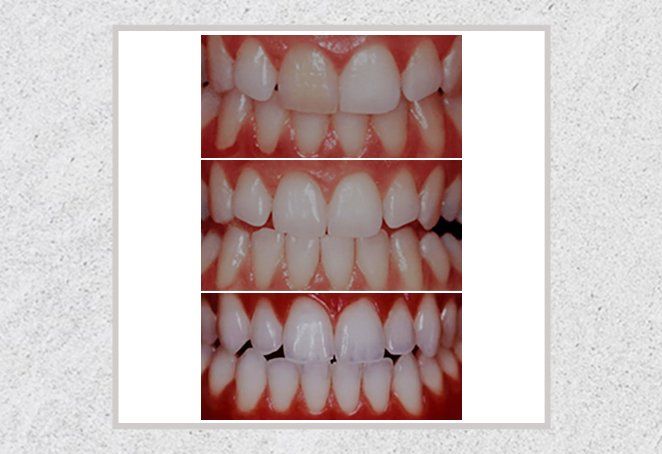
Slide title
Escriba su subtítulo aquíButton
Whitening
- See more
Tooth Whitening in 1 hour
Whitening or dental clearance can be done in one hour with systems catalyzed by UV or laser light.
First, we isolated the teeth, then applied a gel specially formulated for bleaching, this gel is applied in 3 sessions, each 15 minutes.
To complete the procedure, a desensitization treatment is applied, from start to finish, the procedure takes approximately one hour.
Dental Whitening in 7 days
In this technique, impressions are taken from your jaws and you get some models that will be made in our dental lab, latex sleeves, personalized (they do not serve someone else), then they will be given easy-to-use instructions and Simple, "every night at home for 3 hours". We supply the soft, slow and controlled whitening gel with which the results will be obtained after 7 days. It is the most effective system to rinse your teeth in approximately 8 shades, without sensitivity, or pain or discomfort in the gums, results will last for 2 or 3 years depending on your diet, habits and dental hygiene.
The teeth with root canal treatment over time become dark, yellowish and the most effective method to clarify their color is the internal bleaching, inside the pulp chamber, which is combined with external or conventional whitening to obtain these results.
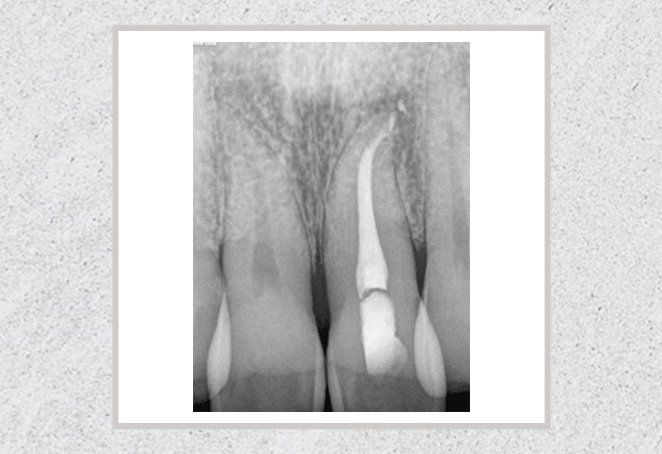
Slide title
Escriba su subtítulo aquíButton
Endodontics
- See more
The TCR of each tooth takes about 1 hour to do so and then the area destroyed by caries will be restored with porcelain or resin to restore that tooth its function, anatomy and aesthetics.
Not only because of caries affection of a tooth is ordered TCR, it is also necessary when the tooth has suffered a coronary fracture that compromises the dental pulp and in some exceptional cases TCR is ordered before being a pillar of a prosthesis.
Facial Pain - Headaches
- Temporomandibular joint or TMJ
The mandible joins or articulates the skull through the temporomandibular joint (TMJ), one left and one right, both of which function or move at the same time, although each may have different movement than the other.
The masticatory system consists of many anatomical components but trying to simplify this information we will refer to the 3 most important components that are: TMJs, the dental component and the neuromuscular system.
Tooth component:
A complete dentition consists of 32 teeth, the loss of teeth that are not restored leads to movements and poor dental positions.
The dental pain is easily identified and the most common, the loss of molars overloads and damages the TMJs.
Neuromuscular component: It is responsible for all mandibular movements, this component is very important in patients suffering from bruxism or tightening of teeth by stress. The pain of muscles of chewing is very frequent, in the morning when you wake up you may have difficulty opening your mouth and intense pain with tiredness and muscle fatigue, bad mood all this referred to as headache, earache, pain in the eyes. It should be remembered that in many cases the neck and back muscles are also compromised.
- Risk Factors :
Bruxism, dental malposition, eating chiclets, sleeping on the stomach, watching TV or studying in bed, etc.
The pain present in TMJs and / or masticatory muscles, if left untreated, can last for years, deteriorating the quality of life of the patient, ruining his marriage and work life by frequent episodes of pain and are referred to as headache . They never stop taking painkillers that do not lead to the cure of this disease. They resort to the doctor and he will explore looking for tumors or aneurysms, arterial hypertension and who knows that another disease distant from the reality of the patient.
Treatments for temporomandibular disorders, masticatory muscles and dental alterations are part of our daily consultation.
For more information request an appointment.







